Bottom Bracket Pressfit and Creaking, an Engineering Analysis
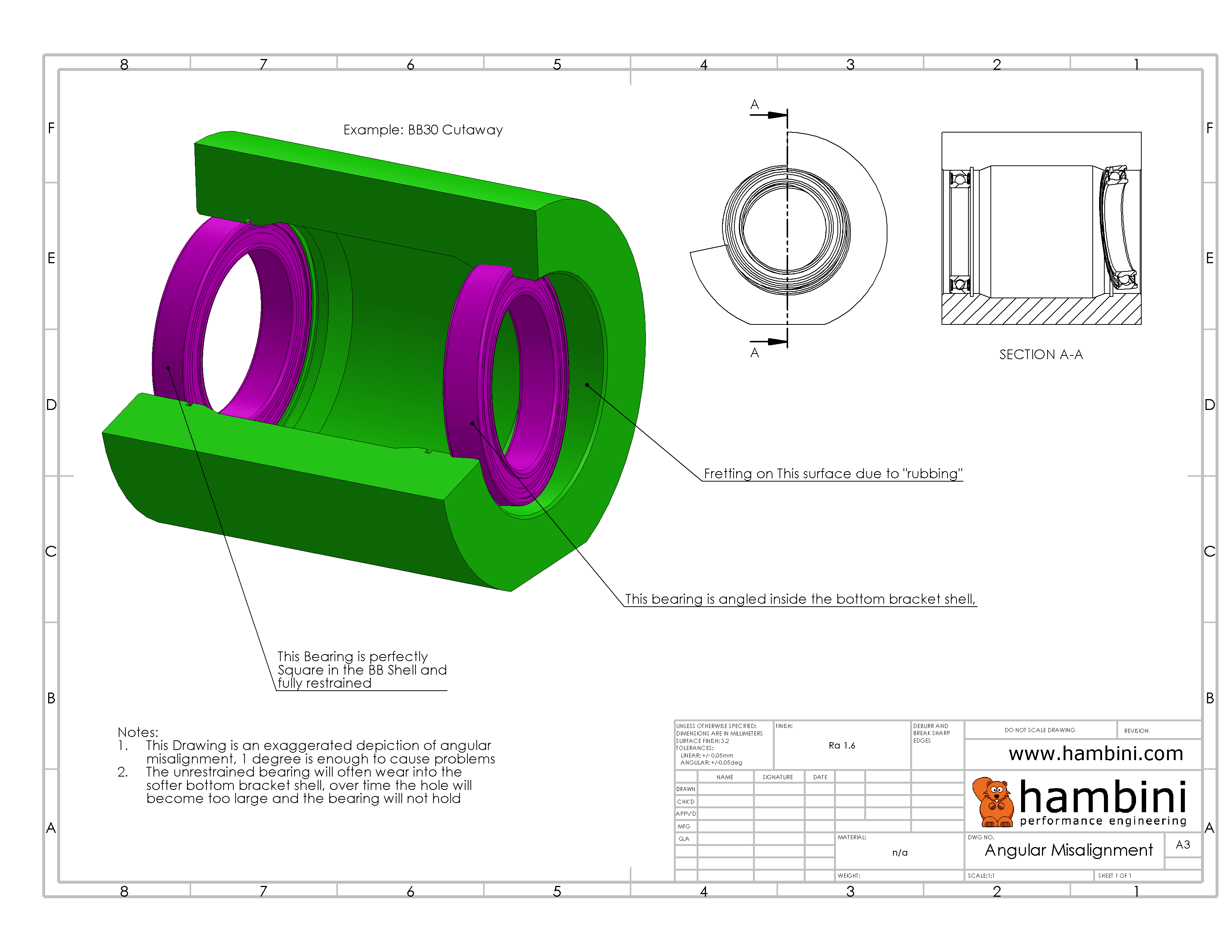
If you are reading this you will have probably already come across the numerous posts by various individuals in Internet forums across the web.
The issue of creaking bottom brackets has been blamed on the introduction of pressfit and directfit bottom bracket standards, where bearings either push directly into the bike frame or push into cups which are then pushed into the bike frame.
General guidance varies from taking everything out and regreasing it to installing with extreme measures such as epoxy resin.
Pressfit is not the problem and threaded is certainly not the answer…
The reality is pressfit has nothing to do with creaking. There are many areas of a bike where bearings have a pressfit and there are no problems. For example, wheels, freehubs, pulley wheels and some headsets are pressfit yet they don’t generally creak.
The basic reason for the creaking is one of two reasons, either a poor fit or misalignment. Often, the two occur at the same time. Modern bicycle frames are now readily available in lightweight materials and more specifically made of carbon. The manufacturing techniques associated with composite structures produce frames which have multiple parts that have been glued (manufacturers will say bonded) together. Bottom brackets are commonly glued together in two halves. A lack of suitable alignment dowels means these parts have a high tendency to be misaligned.
Once a misalignment in a bottom bracket is evident, the hardened bearing surfaces wear the bottom bracket down and the shell becomes a slack fit and thereby causing creak.
The drawing below shows parallel misalignment
The drawing below shows angular misalignment
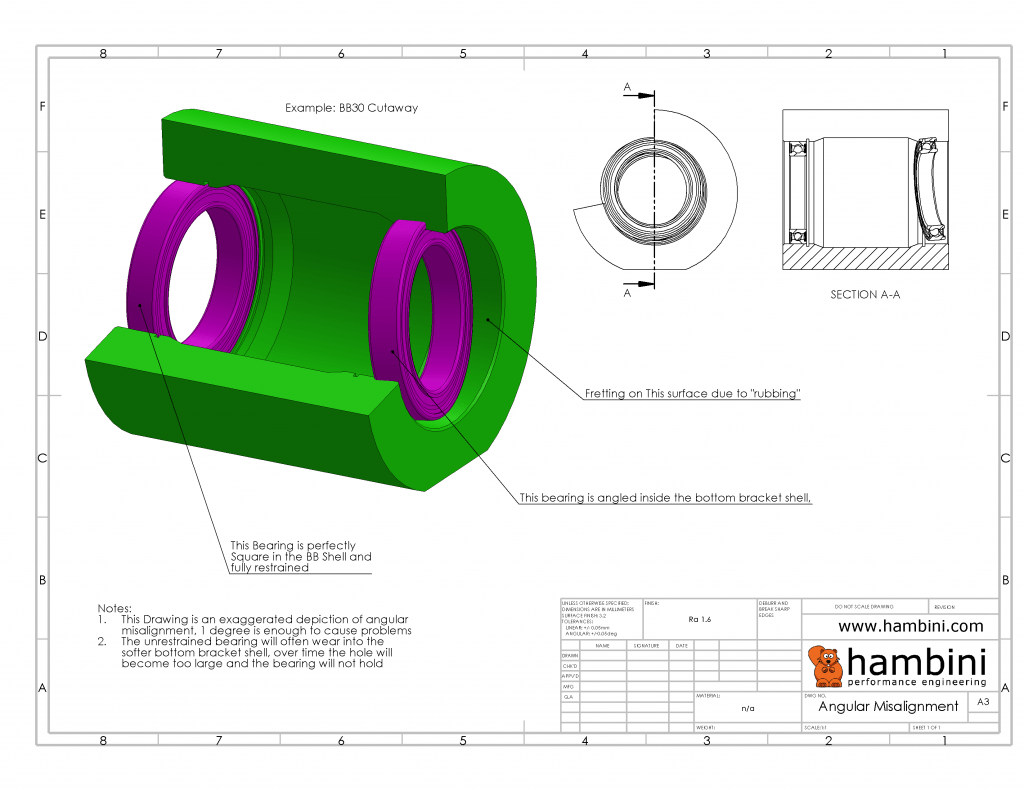
Another route to bottom bracket problems is through issues in the carbon fibre manufacturing process. Carbon is placed into moulds and with pressure and heat, it is cured to produce rigid carbon fibre frames. Unless carefully controlled, this process can produce wildly varying dimensional fits. Practically, the frame manufacturer must allow for expansion and contraction to occur through the autoclave and make allowances for this.
If the expansion and contraction effects are ignored or miscalculated which is a common occurrence, the bike frame could end up with a fit that is too slack and once again a creaking problem may occur.
As a lot of manufacturers sub contract this manufacturing out to companies in China and Taiwan, they are at the mercy of the sub contractors quality control.
The Video below, talks through some of the issues with creak
The chart below is a box and whisker plot showing the dimensional variation between a number of different frame manufacturers. For those who are unfamiliar with box and whisker plots, the box and whiskers represent an entire range, the smaller the boxes and whiskers – the more accurate the frame is. This chart has been normalized to a BB30 or 6806 bearing standard as there are a number of different BB standards on the market.
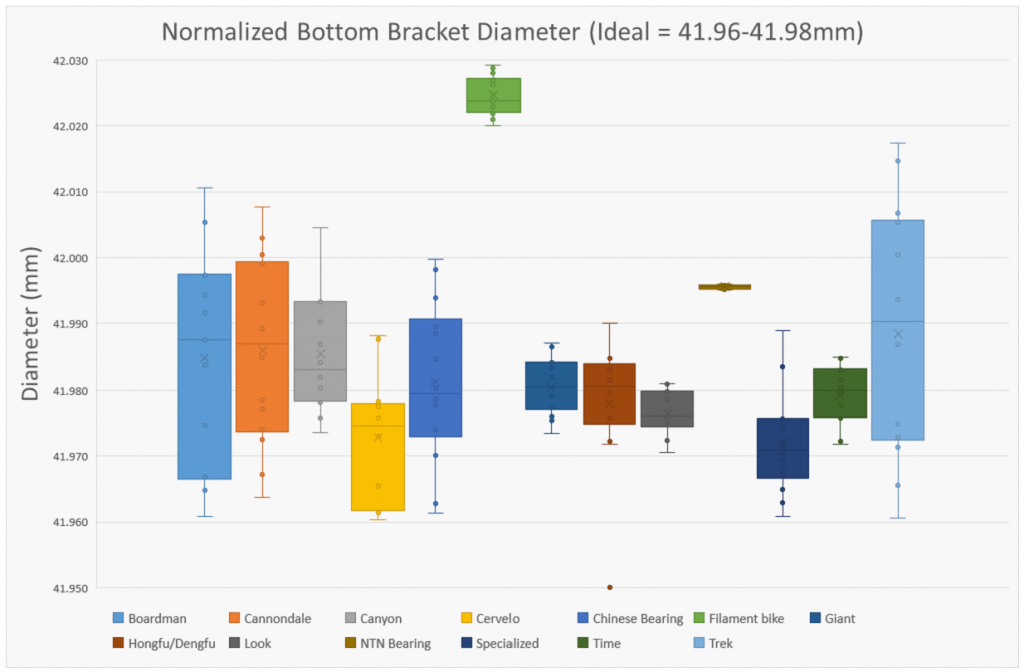
Conclusions
Look and Time have very good manufacturing tolerances, their frames are unlikely to creak. These two companies control their manufacturing in their own factories and this is reflected by very good dimensional stability.
Conversely, of the large manufacturers, Cannondale and Boardman bikes have poor manufacturing tolerances and this is affirmed through numerous posts in multiple bike forums with lots of users reporting bottom bracket problems.
The worst performer in this chart is Filament Bikes. A boutique bike brand run by one individual called Richard Craddock. His bottom brackets are usually much slacker than they should be due to his inability to use accurate measuring equipment and understand the limitations of it. As a result of this, I do not warranty any Hambini bottom bracket in a Filament frame.

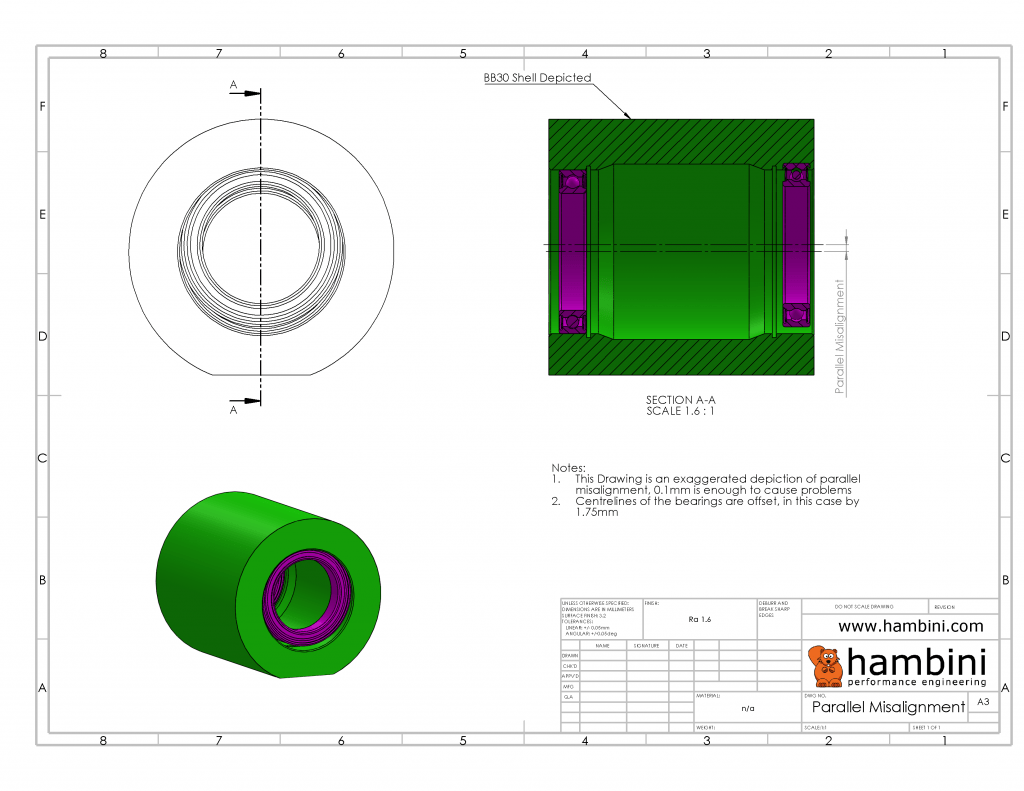
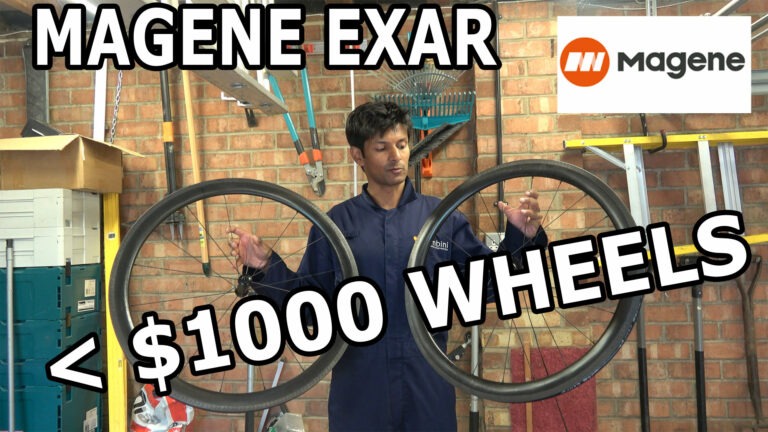
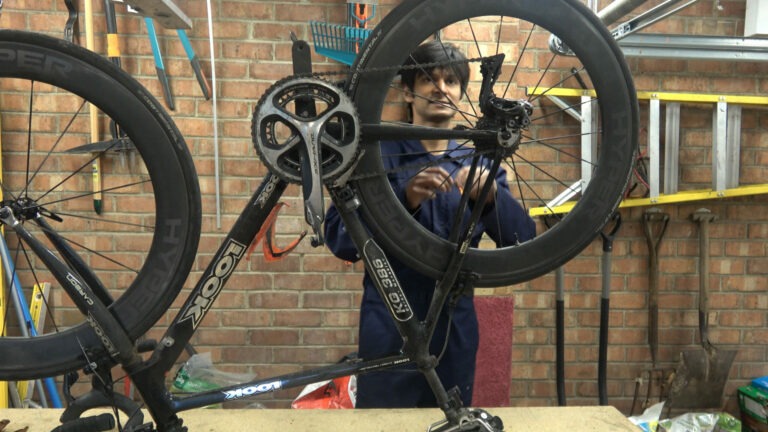
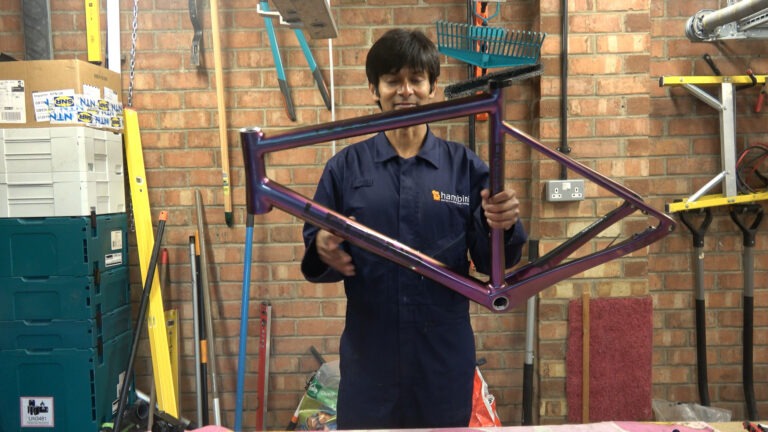
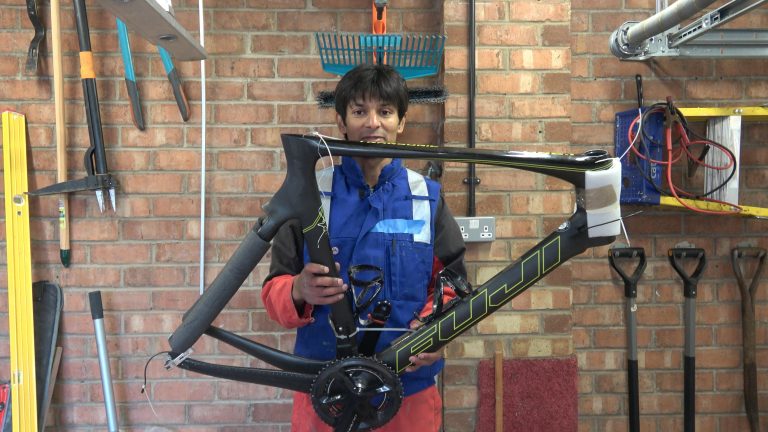
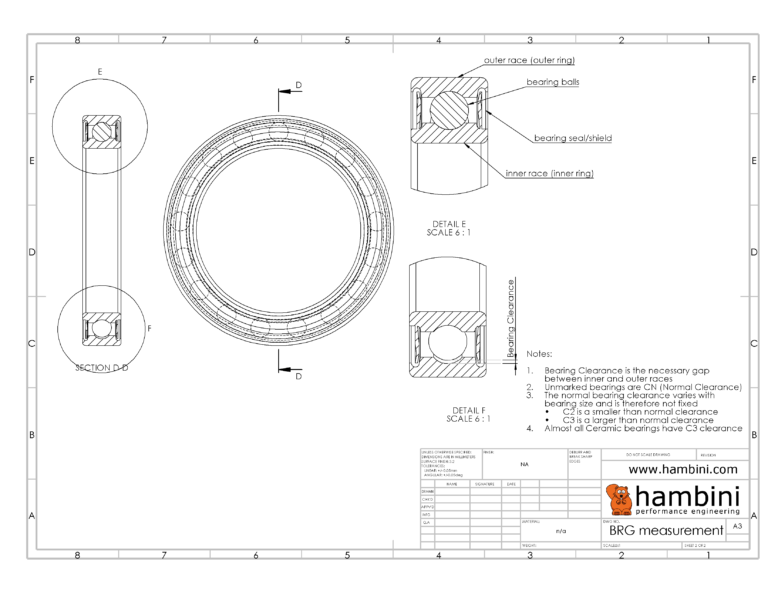
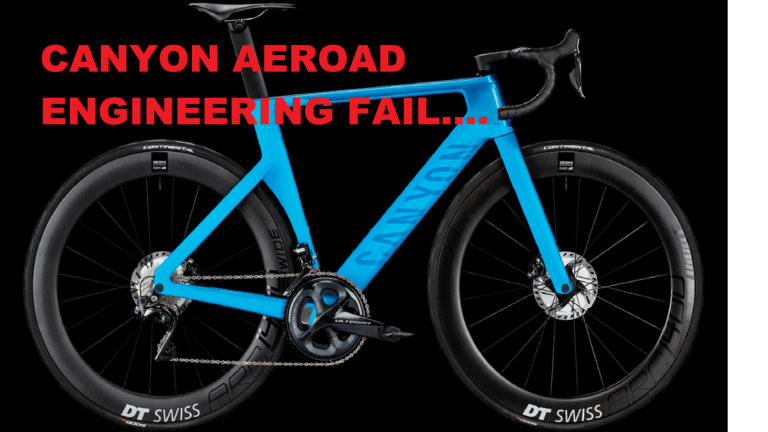
Can slight thread axis misalignment cause problems for threaded aluminum BB shells when using a cartridge-style bottom bracket?
Yes, they will end up with misaligned bearings, it will rotate but not very well.
Thanks for the reply and the interesting video It seems to me that a bike shop or importer could use one of your precision BSA 68mm bottom brackets (without bearings) as a QC tool, to test thread axis alignment on a batch of bikes. It shouldn’t take much misalignment at all to prevent the sleeves from mating, right? You could even offer a gauge set of non-drive side cups with increasing “slop” gradations.
It seems to me that a bike shop or importer could use one of your precision BSA 68mm bottom brackets (without bearings) as a QC tool, to test thread axis alignment on a batch of bikes. It shouldn’t take much misalignment at all to prevent the sleeves from mating, right? You could even offer a gauge set of non-drive side cups with increasing “slop” gradations.
Hi, I bought an FSA Ceramic BB adapter for BB86 to FSA 386evo. I believe I drove the BB incorrectly in my aluminum frame. One side has about one mm or less gap on one lip and the other one as well. My BB does not spin well, not even like an steel BB. Question, should I remove the BB and drive it again or is it just useless? Did a damage the frame when driving the BB incorrectly?
I installed on my aluminum frame a FSA BB86-386EVO Adapter w-Ceramic Bearing. I misaligned it for about one mm on each side. My cranks are not spinning well, not even like regular steel bearings. Should I remove and reinstall? Should I try to pressure the off part only to get it in place? Is the BB still good or did I just damage it? and last, did I damage my frame by misaligning the BB?
Can poor alignment be diagnosed or measured by reasonably competent shops? Does spindle wear on a Shimano Hollowtech II spindle hint at alignment problems even if creaking is not present? While I am confident that a Hambini BB will solve many problems, poorly aligned cups seem like they would kill even the best bearings in a T47 BB.
Hi Hambini – I have a new Trek with a T47 BB. The chainset appears to oscillate quite a lot 1-2 mm and there is a lot of chain noise from the chainset. I have ruled out the issue of the chainset as have fitted a new one and it still oscillates so I’m assuming the issue is with the BB would a misaligned BB cause this kind of oscillation ? Just before I cart the thing back to bike shop I’d be grateful for you comments. Thanks
It could be the BB if it has been machined eccentrically. It’s really difficult to say without measuring it.
Hello
Do you recommend any adhesive or compound to apply on the shell? currently using a Enduro DRF3041RS . the bike is Canyon Inflite CF SLX PF4130 BB86. Thank you for any advise or recommendations
Carlos Lopez
I’m not sure I understand the sample used for this box and whisker plot… there are no data points below 41.96 which means all these frames would have passed the 41.95 and 40.95 gauges… so no undersized shells among so many frame samples?